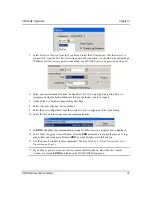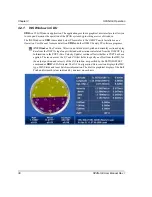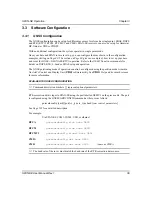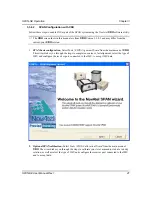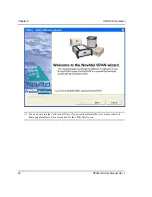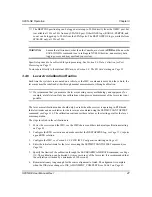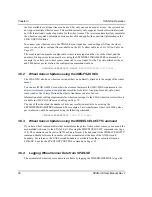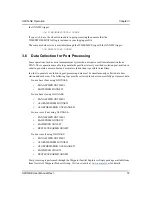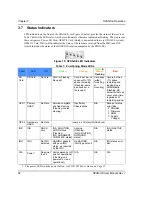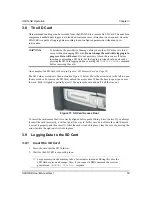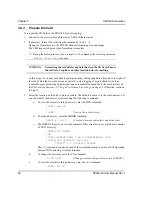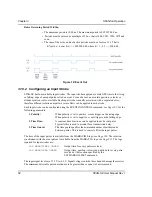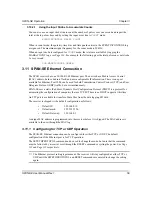
SPAN-SE Operation
Chapter 3
SPAN-SE User Manual Rev 1
45
tions and after some vehicle movement, the INS Status field changes to
INS_SOLUTION_GOOD. This indicates that the estimated azimuth standard deviation is below
2
. If it increases above 2
the status changes to
INS_SOLUTION_NOTGOOD.
3.4.3.1
Coarse Alignment
The coarse alignment is the default alignment routine for SPAN. The alignment starts as soon as a
GNSS solution is available, the receiver has computed fine time and the IMU is connected and
configured. The vehicle must remain stationary for the alignment to happen. During the coarse
alignment, accelerometer and gyro measurements are averaged over a period of time to measure Earth
rotation and gravity. From these averaged measurements, initial estimates of roll, pitch and heading
are computed. Because the coarse alignment uses averaged sensor output, the vehicle must remain
stationary for the duration of the alignment, which is approximately 1 minute. The attitude estimates
solved by the alignment are larger than the system specified attitude accuracy and vary upon the
characteristics of the sensor and the geographic latitude of the system. Attitude accuracy converges
with motion after the coarse alignment is complete (see
Section 3.4.4, Navigation Mode
If the system is stationary for less than 1 minute, the coarse alignment finishes early, provided at least
5 stationary seconds were detected. The quality of the coarse alignment is poorer with stationary
durations of less than 1 minute.
3.4.3.2
Kinematic Alignment
If the preferred coarse alignment routine cannot be performed because the vehicle cannot remain
stationary for the length of time required, an alternate alignment routine is available. The kinematic or
moving alignment is performed by estimating the attitude from the GNSS velocity vector and
injecting it into the SPAN filter as the initial system attitude.
Currently, this alignment routine is meant only for ground-based vehicles. The assumptions used for
the alignment may not hold for marine or airborne applications. For the fast alignment routine to work
optimally, the course-over-ground’s azimuth and pitch must match the SPAN computation frame’s
azimuth and pitch. (For example, a plane being blown in the wind has a a large ‘crab angle’ and the
course-over ground trajectory will not match the direction the IMU is pointing.)
Additional configuration parameters are necessary to enable the kinematic alignment. In order to
simplify this configuration it is strongly suggested that you mount the IMU in parallel to the vehicle
frame. The Y axis marked on the IMU enclosure, should point in the direction of travel.
Specify which IMU axes are most closely aligned with gravity using the SETIMUORIENTATION
command. If the IMU is mounted with the Z-axis up and the Y-axis pointing in the direction of travel,
then the command would be:
SETIMUORIENTATION 5
Specify the angular offsets between the SPAN frame and the vehicle frame (known as vehicle/body
rotation or RVB) using the VEHICLEBODYROTATION command, see
. If the IMU is
mounted coincidentally with the vehicle frame (defined as z up and y pointing in the direction of
travel), then the command would be:
VEHICLEBODYROTATION 0 0 0
Alternatively, solve the vehicle to IMU frame angular offsets using the RVBCALIBRATE routine. See
also
Section 3.4.7, Vehicle to SPAN frame Angular Offsets Calibration Routine
.







